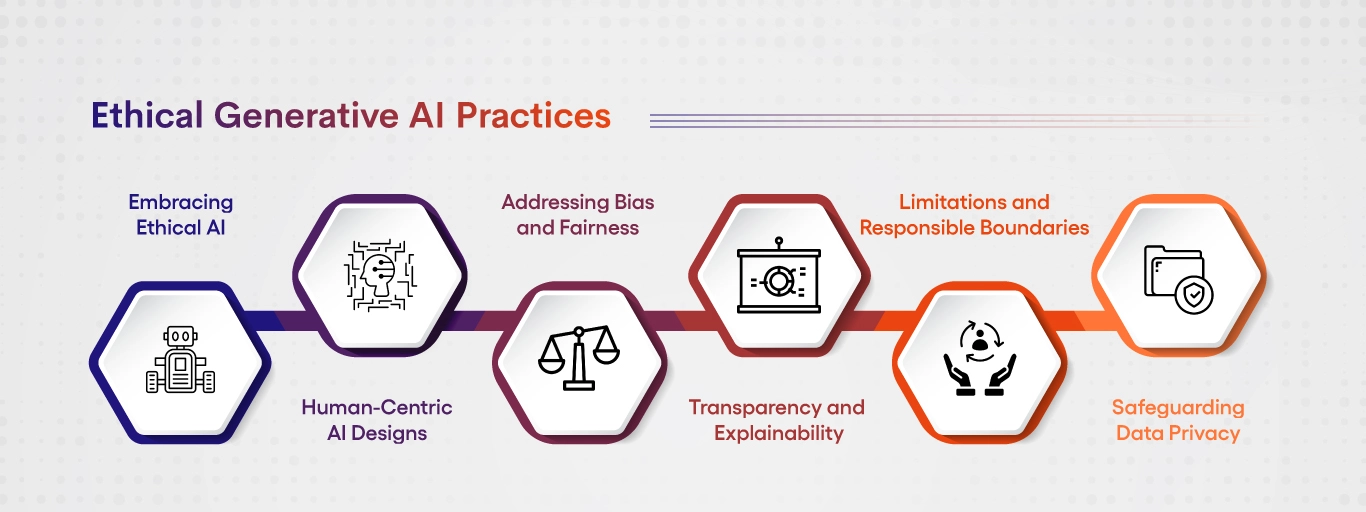- Blog
- October 6, 2023
Ethical Generative AI Practices

- Blog
- October 6, 2023
Ethical Generative AI Practices
In the rapidly evolving landscape of Artificial Intelligence, Generative AI stands out as a remarkable breakthrough, empowering machines to create and innovate. However, with great power comes great responsibility. As we harness the capabilities of Generative AI, it is crucial to navigate its ethical implications and ensure responsible usage. In this thought-provoking blog, we dig into the potential of Generative AI, the ethical considerations it demands, and how organizations can leverage it responsibly.

Embracing Ethical AI:
Generative AI introduces a paradigm shift in creativity and automation. As we embrace this technology, it is vital to instill ethical principles at its core. By nurturing an AI-driven ecosystem grounded in transparency, fairness, and accountability, we can empower Generative AI to contribute positively to society while safeguarding against potential pitfalls.
Human-Centric AI Designs:
Human-centric design principles play a pivotal role in responsible Generative AI deployment. Organizations must prioritize the user experience, ensuring that AI-generated content aligns with user preferences and values. By putting human needs at the forefront, we can create AI solutions that augment human capabilities rather than replace them.
Addressing Bias and Fairness:
Generative AI models are inherently shaped by the data they are trained on. To ensure fairness and mitigate biases, data sets must be carefully curated to represent diverse perspectives. Ethical considerations extend beyond data collection; organizations must continuously monitor and address biases that may emerge during AI deployment.
Transparency and Explainability:
As Generative AI produces creative outputs, the black-box nature of deep learning models poses challenges in understanding the decision-making process. Emphasizing transparency and explainability is vital to building trust with users and stakeholders. Organizations must strive to demystify AI outputs, allowing users to comprehend how AI arrived at its conclusions.
Limitations and Responsible Boundaries:
Responsible Generative AI adoption involves understanding the limitations of AI systems. Organizations should establish clear boundaries on the type of content AI can generate, avoiding harmful, deceptive, or misleading outputs. By acknowledging the limitations, we foster an environment where AI aids human intelligence without compromising integrity.
Safeguarding Data Privacy:
Generative AI heavily relies on vast datasets for training. Protecting user data and ensuring privacy are paramount. Organizations must implement robust data protection measures, comply with data regulations, and seek explicit user consent before utilizing personal information for AI applications.
Conclusion:
Generative AI presents an exciting frontier of possibilities, but with these opportunities comes a profound responsibility. As we traverse the landscape of Generative AI, let us remain steadfast in our commitment to ethical principles, human-centricity, and transparency. By using Generative AI responsibly, we can harness its potential for positive transformation, making the world a better place for all.




